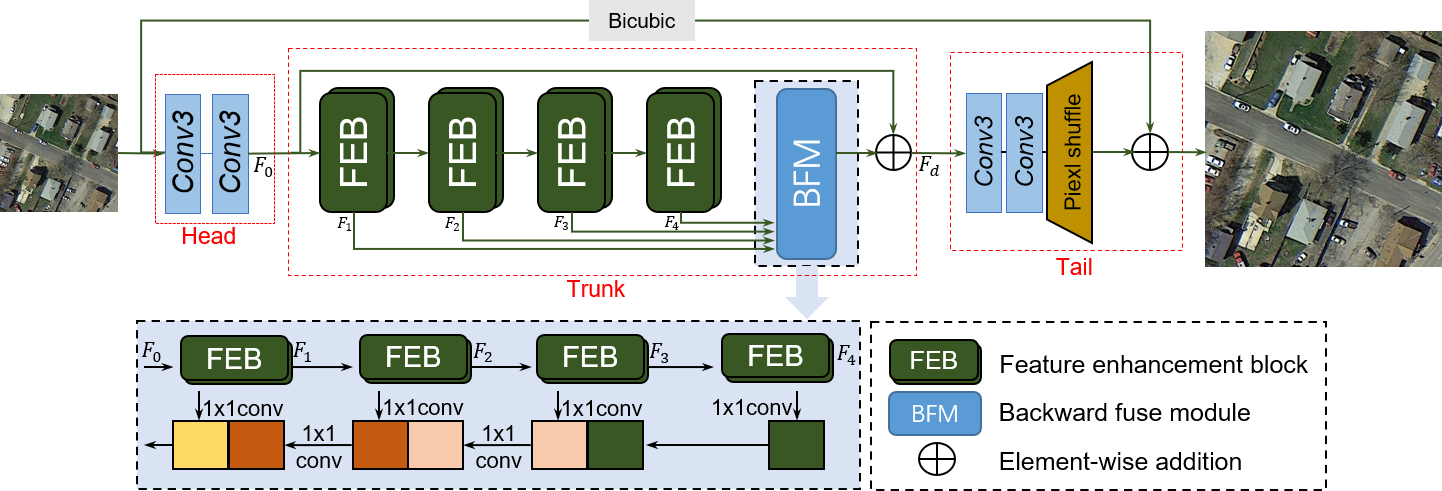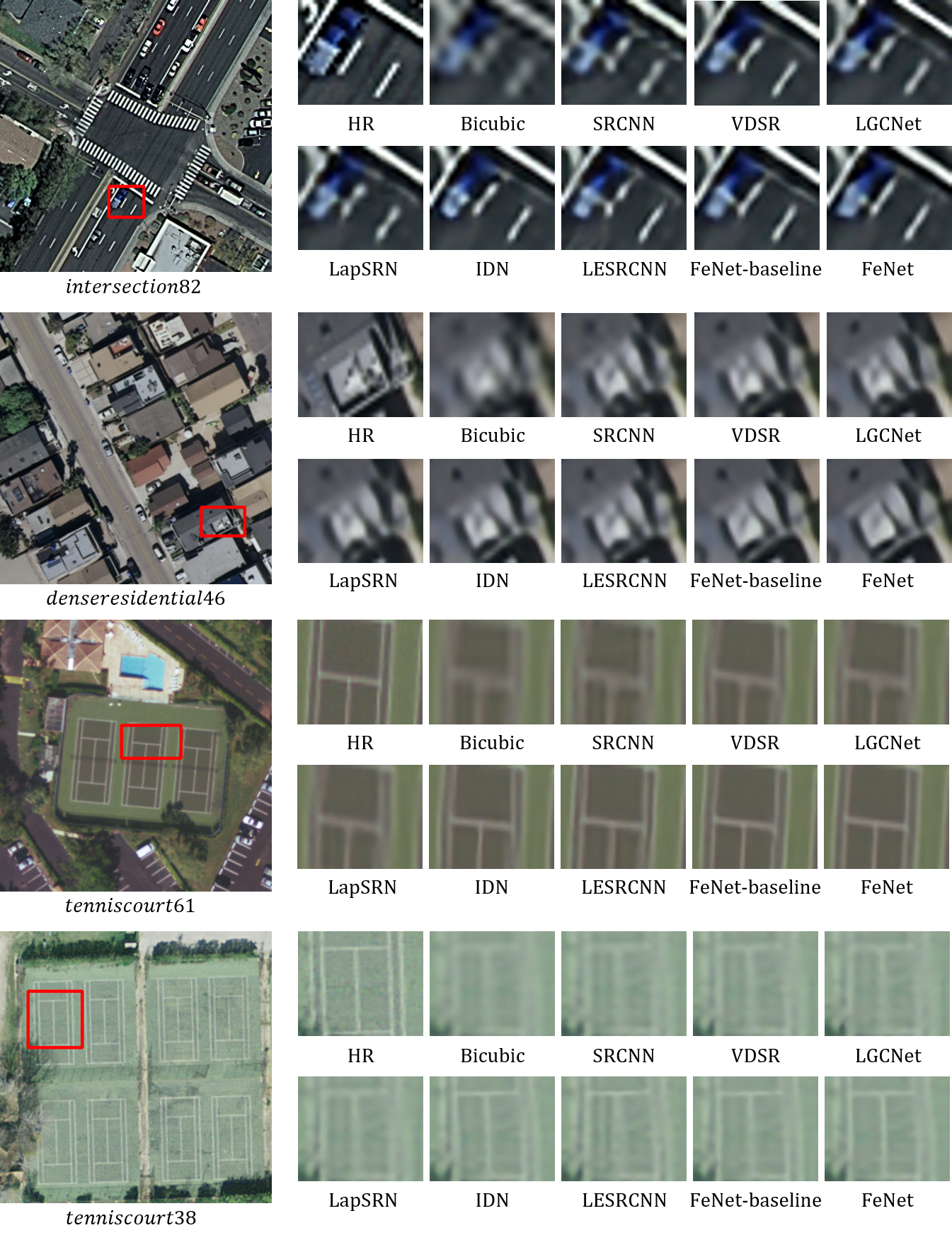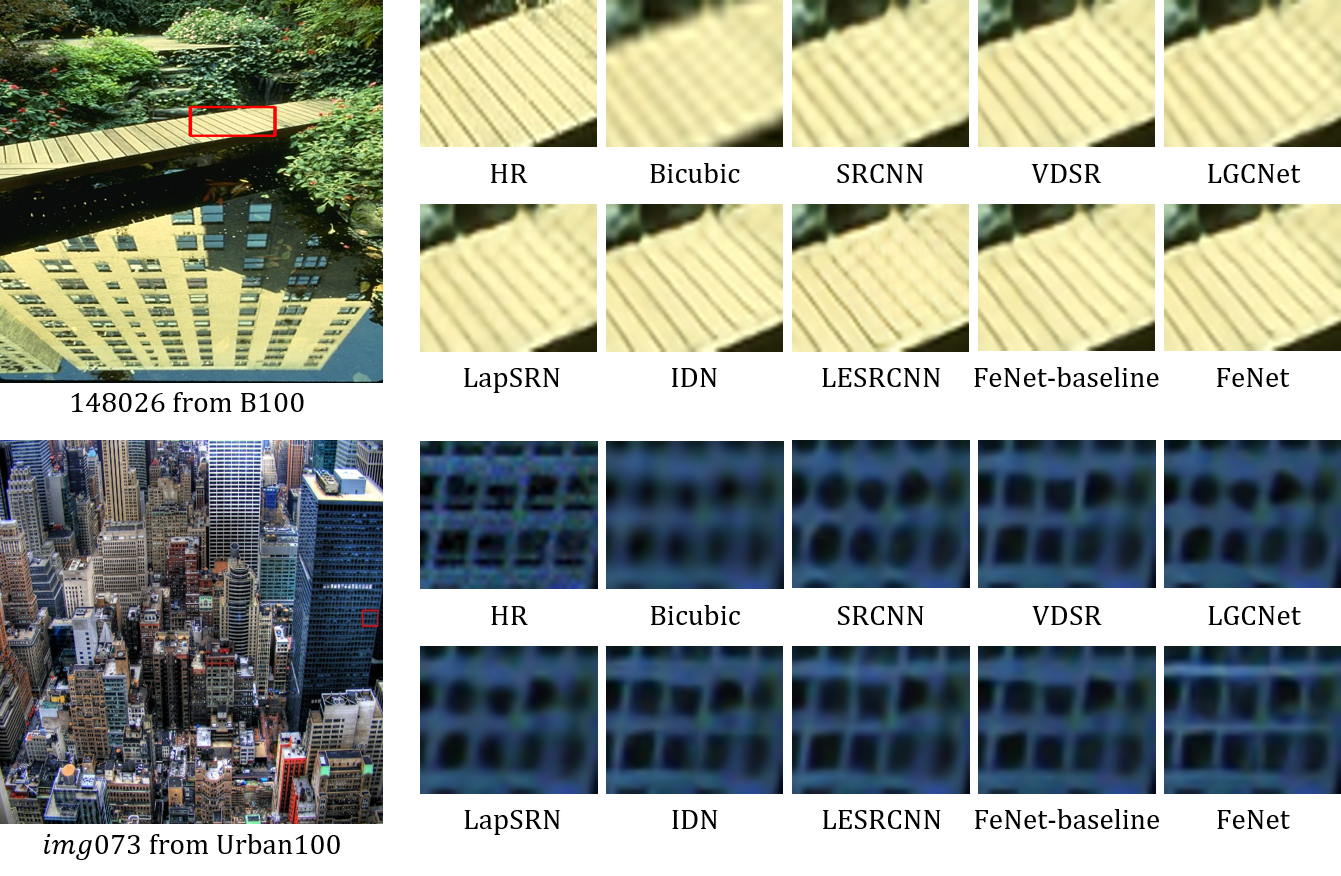This repository is for FeNet introduced in the following paper
Z. Wang et al., "FeNet: Feature Enhancement Network for Lightweight Remote-Sensing Image Super-Resolution," in IEEE Transactions on Geoscience and Remote Sensing, 2022, [paper]
In the field of remote sensing, due to memory consumption and computational burden, the single image superresolution (SR) methods based on deep convolution neural networks (CNNs) are limited in practical application. To address this problem, we propose a lightweight feature enhancement network (FeNet) for accurate remote sensing image super-resolution (SR). Considering the existence of equipment with extremely poor hardware facilities, we further design a ligher FeNet-baseline with about 158K parameters. Specifically, inspired by lattice structure, we construct a lightweight lattice block (LLB) as nonlinear feature extraction function to improve the expression ability. Here, channel separation operation makes the upper and lower branches of the LLB only responsible for half of the features, and the weight coefficients calculated through the attention mechanism enable the upper and lower branches to communicate efficiently. Based on LLB, the feature enhancement block (FEB) is designed in a nested manner to obtain expressive features, where different layers are responsible for the features with different texture richness, and then features from different layers are sequentially fused from deep to shallow. Model parameters and multi-adds operations are used to evaluate network complexity, and extensive experiments on two remote sensing and four SR benchmark test datasets show that our methods can achieve good trade-off between complexity and performance.
-
Download Training dataset DIV2K
-
You can use Prepare_TestData_HR_LR.m to generate low-resolution remote sensing images from the corresponding high-resolution remote sensing images.
-
Convert png file to npy file
python scripts/png2npy.py --pathFrom /path/to/DIV2K/ --pathTo /path/to/DIV2K_decoded/- Run training x2, x3, x4 model
python train.py --root /path/to/DIV2K_decoded/ --scale 2
python train.py --root /path/to/DIV2K_decoded/ --scale 3
python train.py --root /path/to/DIV2K_decoded/ --scale 4 - Runing test:
# Set5 x2
python test.py --test_hr_folder ./Test_Datasets/set5/HR/ --test_lr_folder ./Test_Datasets/set5/LR_bicubic/x2/ --output_folder ./results/figure --checkpoint ./checkpoints/FeNet_x2.pth --upscale_factor 2Note that the PSNR and SSIM can also be evaluated on Matlab R2017a and the code can be referred to Evaluate_PSNR_SSIM.m. And test.py is the pytorch version of Evaluate_PSNR_SSIM.m.
RS-1 and RS-2 used in this paper. Download from here

Model parameters and accuracy trade-off with the state-of-the-art
lightweight methods on Urban100 for 2× SR. Our proposed FeNet achieves
superior performance, and our FeNet-baseline also maintains competitive
performance.

The overall network architecture of the proposed FeNet.

The structure of feature enhancement block (FEB).

Visualization results on UC-Merced for 3× SR

Visualization results on B100 and Urban100 datasets for 3× SR.
The code is built on IMDN and RCAN (PyTorch). See IMDN and RCAN for details
If you find FeNet useful in your research, please consider citing:
@ARTICLE{9759417,
author={Wang, Zheyuan and Li, Liangliang and Xue, Yuan and Jiang, Chenchen and Wang, Jiawen and Sun, Kaipeng and Ma, Hongbing},
journal={IEEE Transactions on Geoscience and Remote Sensing},
title={FeNet: Feature Enhancement Network for Lightweight Remote-Sensing Image Super-Resolution},
year={2022},
volume={60},
number={},
pages={1-12},
doi={10.1109/TGRS.2022.3168787}}